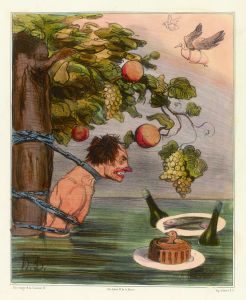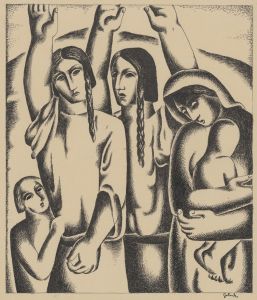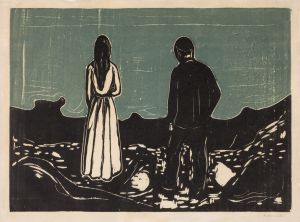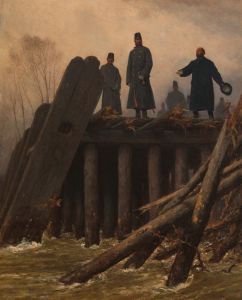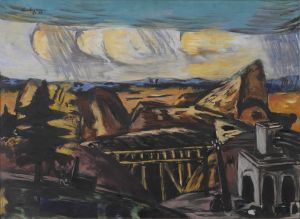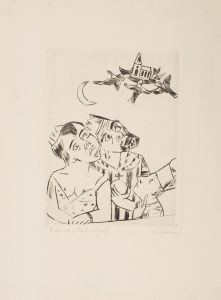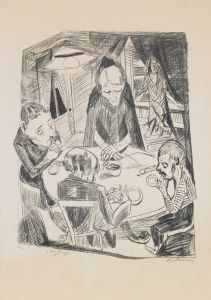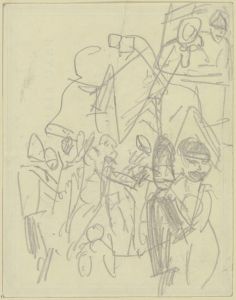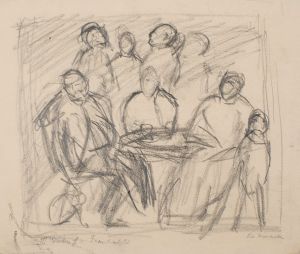
Apokalypse
A hand-painted replica of Max Beckmann’s masterpiece Apokalypse, meticulously crafted by professional artists to capture the true essence of the original. Each piece is created with museum-quality canvas and rare mineral pigments, carefully painted by experienced artists with delicate brushstrokes and rich, layered colors to perfectly recreate the texture of the original artwork. Unlike machine-printed reproductions, this hand-painted version brings the painting to life, infused with the artist’s emotions and skill in every stroke. Whether for personal collection or home decoration, it instantly elevates the artistic atmosphere of any space.
Max Beckmann, a prominent German painter and printmaker, is known for his intense and expressive works that often explore themes of existentialism, human suffering, and the chaos of the modern world. One of his notable works is "Apokalypse," a painting that reflects his deep engagement with the tumultuous events of his time and his unique artistic vision.
"Apokalypse" was created during a period when Beckmann was grappling with the aftermath of World War I and the rise of political tensions in Europe. This era significantly influenced his artistic output, as he sought to capture the sense of disillusionment and anxiety that permeated society. Beckmann's work often features complex compositions and a vivid use of color, characteristics that are evident in "Apokalypse."
The painting is a part of Beckmann's broader exploration of apocalyptic themes, which he revisited throughout his career. These themes are often depicted through symbolic imagery and allegorical figures, reflecting his interest in mythology, religion, and the human condition. Beckmann's style is marked by a departure from traditional representation, embracing a more expressionistic approach that conveys emotional intensity and psychological depth.
In "Apokalypse," Beckmann employs a dynamic composition filled with figures and forms that seem to be in constant motion. The painting's title, which translates to "Apocalypse" in English, suggests a narrative of destruction and revelation, common motifs in apocalyptic literature and art. Beckmann's interpretation of the apocalypse is not merely a depiction of end times but rather a commentary on the cyclical nature of human history and the perpetual struggle between chaos and order.
The figures in "Apokalypse" are rendered with Beckmann's characteristic bold outlines and exaggerated features, creating a sense of drama and urgency. The use of color is particularly striking, with contrasting hues that heighten the emotional impact of the scene. Beckmann's technique involves layering paint to achieve a rich texture, adding to the painting's overall sense of depth and complexity.
Beckmann's work, including "Apokalypse," is often seen as a response to the socio-political upheavals of his time. His paintings serve as a mirror to the anxieties and uncertainties faced by individuals in the early 20th century. "Apokalypse" can be interpreted as a reflection of Beckmann's personal experiences and observations, as well as a broader commentary on the human condition.
Throughout his career, Beckmann remained committed to exploring themes of existentialism and the human psyche, making his work resonate with audiences both in his time and today. "Apokalypse" stands as a testament to his ability to capture the complexities of the human experience through his distinctive artistic language.
Max Beckmann's legacy as an artist is marked by his profound impact on modern art, and "Apokalypse" is a significant example of his contribution to the expressionist movement. His work continues to be studied and appreciated for its emotional depth, technical skill, and insightful commentary on the world.





